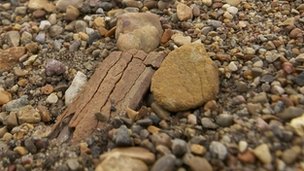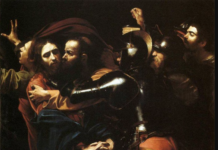
Scientists have unearthed the fossilized remains of a giant species of camel in Canada’s high Arctic. An analysis of protein found in the bones has revealed that this creature is an ancestor of today’s species, according to an article in “Nature Communications.”
Dr Mike Buckley, an author of the paper from the University of Manchester, said: “What’s interesting about this story is the location: this is the northernmost evidence of camels.”
The era in which scientists believe this giant camel roamed the Arctic was a warm period of the Earth’s history — but surviving in the Arctic could still have been tough. The ancient camels had to cope with long and harsh winters, with temperatures plunging below freezing. Scientists say there could have been snowstorms and months of perpetual darkness; however, at that time the polar region would have been covered in forest.
While scientists have known for some time that camels existed in North America, they were astonished to find a species at such high latitude. Over the course of three expeditions, which began in 2006, researchers from the Canadian Museum of Nature collected 30 fragments of fossilized leg bone from Ellesmere Island in Canada.
The bone’s size suggests that the animal was larger than today’s camels, measuring about 2.7m from foot to shoulder and might have had a shaggier coat to stay warm.
As it states in Genesis 11:1-9, all the people of the world were scattered over the face of the earth when they began to build the Tower of Babel:
“Now the whole world had one language and a common speech. As people moved eastward, they found a plain in Shinar and settled there. They said to each other, ‘Come, let’s make bricks and bake them thoroughly’. They used brick instead of stone, and tar for mortar. Then they said, ‘Come, let us build ourselves a city, with a tower that reaches to the heavens, so that we may make a name for ourselves; otherwise we will be scattered over the face of the whole earth’. But the Lord came down to see the city and the tower the people were building. The Lord said, ‘If as one people speaking the same language they have begun to do this, then nothing they plan to do will be impossible for them. Come, let us go down and confuse their language so they will not understand each other’. So the Lord scattered them from there over all the earth, and they stopped building the city. That is why it was called Babel—because there the Lord confused the language of the whole world. From there the Lord scattered them over the face of the whole earth.” (NIV)
Is this archeological find further evidence for this biblical account? After the Lord confused the languages and people scattered over the face of the earth, is it possible they rode camels from the Middle East into the Arctic?
The archeological team also took collagen, the dominant protein found in bone, and compared this with collagen found in other fossils and modern animals. “These biomolecules tell us that it is a direct ancestor of modern camel,” Dr. Buckley noted.
The scientists believe the camel’s hump (which stores fat, not water as is sometimes thought) could have provided the reserves needed for an Arctic six-month winter if needed. Their large eyes could have helped them to see in the low light, and their flat feet may have been useful for walking on snow if that was indeed the climate of the day.




I agree with your considered.Thank you for your sharing.
Comments are closed.